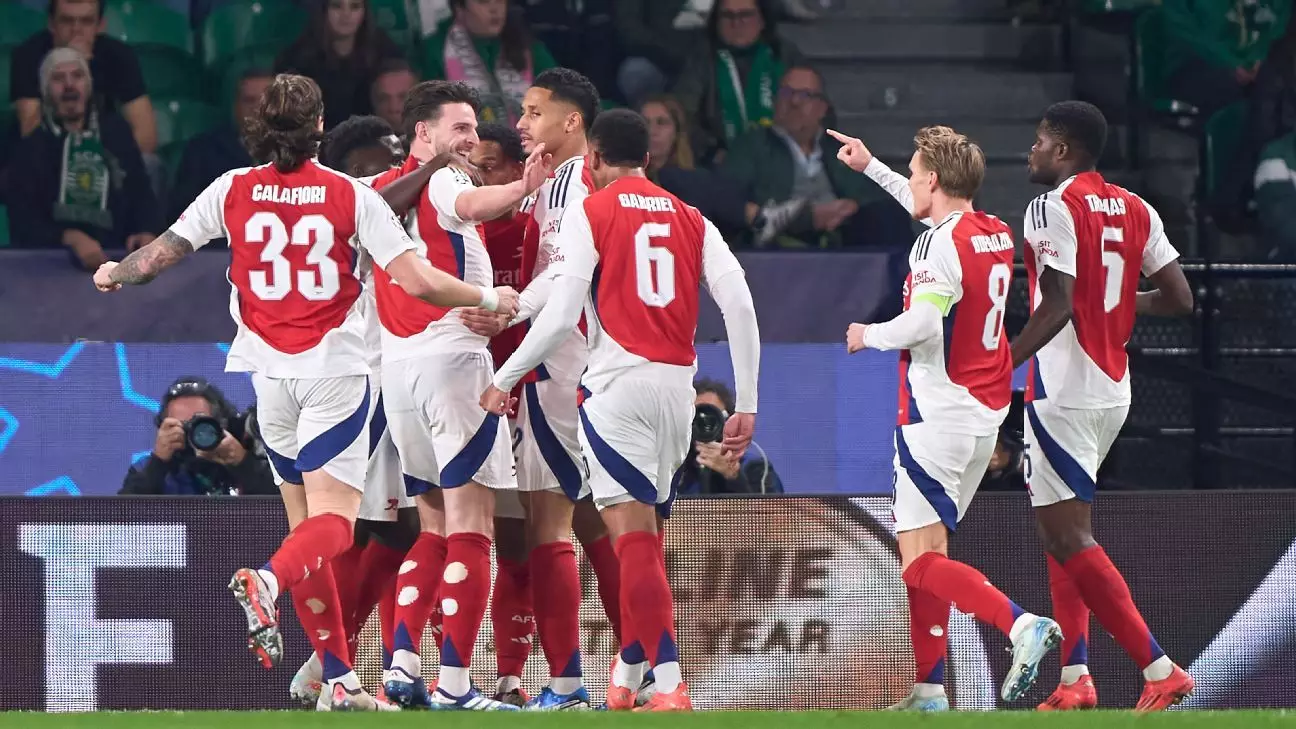As the UEFA Champions League approaches one of its most thrilling stages, anticipation among football fans worldwide is palpable. The round-of-16 stage marks a pivotal juncture in the tournament, where elite clubs vie for supremacy in Europe’s most prestigious competition. In this article, we will delve into the structure and timing of the draw, examine the implications of the new format, and consider how team placements open paths for potential matchups in the knockout phase.
The draw for the round of 16 is scheduled for February 21, with the show kicking off at 6 a.m. ET / 11 a.m. GMT. This event will set the stage for the knockout phase, featuring the top eight clubs from the league phase and the winners of the knockout playoff rounds. Understanding how these teams qualify is crucial—those finishing in the top eight advance directly, while teams ranked ninth to 24th compete to secure their spots through knockout matches.
This year, notable clubs such as Arsenal, Barcelona, Bayern Munich, and Liverpool have made it through, joined by the victors from the playoff stage like Benfica, Club Brugge, and Inter Milan. The draw introduces a sense of excitement, predicting which clubs will clash in high-stakes face-offs. Fans will particularly focus on the matchups between historic rivals and teams with passionate followings—these fixtures promise to be nothing short of exhilarating.
The UEFA Champions League has seen a new format this season, designed to enhance the structure of the knockout rounds. Unlike the traditional approach of randomly drawing pairs, this modified system predetermined placement within the knockout bracket based on league standings. Teams are categorized in pairs, with the top eight clubs allocated two potential match slots each, categorically organized to ensure that certain teams do not face one another until later rounds. For instance, clubs like Liverpool and Barcelona—who dominated their groups—can only face specific ranked teams from the lower end of the bracket.
This format has drawn both admiration and skepticism. Supporters appreciate the strategic element, which allows for clearer projections of potential matches as the tournament progresses. However, critics argue that it may lessen the drama typically associated with a complete random draw. The anticipation built around the idea of unexpected matchups could potentially diminish, as clubs can now forecast most of their tournament path in advance.
The draw not only determines pairings but also has significant tactical implications for the teams involved. For example, Liverpool and Barcelona, as top seeds, will likely prefer facing lower-ranked opponents, which could pave the way for smoother advancement to the quarterfinals. The knockout stage is unforgiving; every decision—down to which players to field and how to strategize each match—may very well shape their destiny in the tournament.
With the draw structure, all eyes will be scrutinizing the potential face-offs between heavyweights like Manchester City, Bayern Munich, and Real Madrid. The opportunity for clashes among such elite teams ensures that the competition will be fiercely contested, leading to thrilling encounters that captivate audiences both in stadiums and at home.
After the round of 16, the tournament will continue through the quarterfinals and semifinals. The first legs are set for early April, and the finals will take place on May 31 at the Allianz Arena in Munich. Fanfare and excitement surrounding these fixtures can only build as clubs strive for a place in the coveted final. With each passing round, expectations will rise, and with it, the pressure on clubs vying for European glory.
Additionally, a draw will follow the round of 16 to determine home-field advantages for the quarterfinals and semifinals. This element plays a crucial role, as hosting the second leg often gives clubs an edge, encouraging tactical adjustments dependent on the outcome of the first leg.
The Challenges of Squad Management
Amidst the fervor of the knockout rounds, clubs must also navigate the complexities of squad management. Under the current regulations, teams are permitted three changes to their official roster before the knockout phase begins. This limitation forces clubs to make strategic decisions—not only must they assess the level of their new signings but also how to manage their existing cohorts to achieve the optimal blend of experience and youth in critical matches.
In a season filled with uncertainties, clubs like Manchester City have already made significant moves in the transfer market, registering new talent while ensuring compliance with UEFA regulations on squad size and composition. This balancing act exemplifies the rigorous demands placed on clubs in their pursuit of the Champions League trophy.
The impending draw for the UEFA Champions League’s round of 16 is set to ignite passions across the globe. The exciting new format, alongside evolving strategies and player management decisions, promises a captivating knockout stage. As teams prepare for imminent clashes, one thing is clear: the journey to claim European football’s most prestigious trophy is just beginning.

